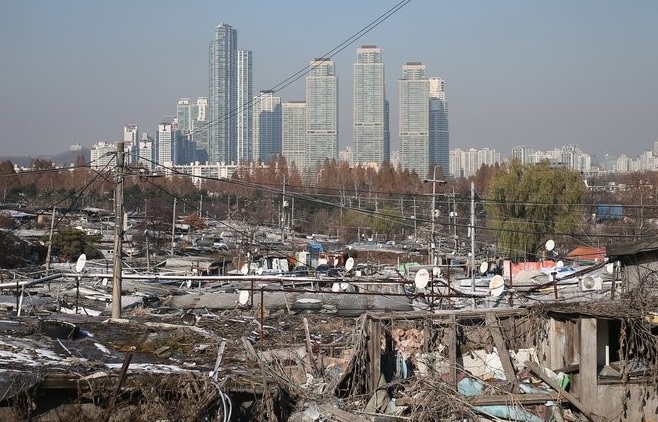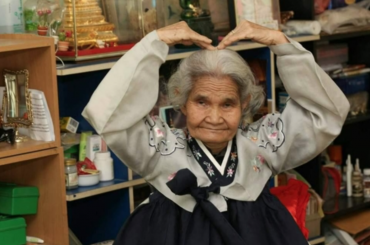
This undated file photo shows Guryong Village, the last remaining slum in Seoul, in stark contrast to the towering apartment complex across the road. (Yonhap)
SEOUL, Aug. 2 (Korea Bizwire) — The number of South Koreans facing housing problems, residing in shacks, vinyl greenhouses, or moving from one accommodation to another without a permanent place to stay, is on the rise.
According to data from Statistics Korea, last year saw over 1.83 million household members living ‘outside of a house,’ representing an increase of 41,000 people (2.3 percent) from the previous year.
Statistics Korea classifies household members as those living in houses or those in spaces that lack the essential components of a house: one room or more, a kitchen, and an independent entrance.
These spaces include officetels, guestrooms, dormitories, special gathering facilities, shacks, and vinyl greenhouses.
Excluding officetel residents, most of these people struggle with a housing problem.
The number of household members living ‘outside of a house,’ excluding officetels, reached a peak in 2018 with just under 2 million people. The number then declined for the next three years before rebounding last year.
The data indicates that the housing situation for the impoverished population has worsened, despite housing prices going down last year.
Some sources suggest that increased household spending following the drastic increase in interest rates last year, combined with a massive housing deposit scam, may have forced individuals out of their homes.
According to a report submitted by the Korea Housing and Urban Guarantee Co. to the National Assembly, ‘multi-housing debtors under intensive monitoring’ — those who have embezzled long-term rental deposits from tenants — were responsible for embezzling 438.2 billion won (US$337 million).
The amount of deposit embezzlement was no more than 3 billion won in 2018. However, it rose to 50.4 billion won in 2019, 187.1 billion won in 2020, and 355.5 billion won in 2021.
“There must be a variety of reasons, but businesses that succumbed to high interest rates, and victims of deposit fraud are likely to have been driven out of their homes,” said Kim Gwang-seok, a bureau head at the Institute for Korean Economy and Industry.
“The government should focus its policy on housing stabilization, rather than the stabilization of housing prices.”
H. M. Kang (hmkang@koreabizwire.com)






